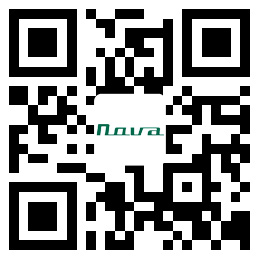- Español
- Português
- русский
- Français
- 日本語
- Deutsch
- tiếng Việt
- Italiano
- Nederlands
- ภาษาไทย
- Polski
- 한국어
- Svenska
- magyar
- Malay
- বাংলা ভাষার
- Dansk
- Suomi
- हिन्दी
- Pilipino
- Türkçe
- Gaeilge
- العربية
- Indonesia
- Norsk
- تمل
- český
- ελληνικά
- український
- Javanese
- فارسی
- தமிழ்
- తెలుగు
- नेपाली
- Burmese
- български
- ລາວ
- Latine
- Қазақша
- Euskal
- Azərbaycan
- Slovenský jazyk
- Македонски
- Lietuvos
- Eesti Keel
- Română
- Slovenski
- मराठी
- Srpski језик
Basic knowledge of abrasives
2021-10-19
① Abrasive is a sharp, hard material used to grind the surface of the material. Artificial abrasives are generally alumina, zirconia, silicon carbide and so on.
② Abrasive tools are tools for grinding, grinding and polishing. Most of the abrasives are artificial abrasives made of abrasives and bonding agents. In addition to being widely used in machinery manufacturing and other metal processing industries, abrasive tools are also used in the processing of non-metallic materials such as food processing, paper industry and ceramics, glass, stone, plastic, rubber, and wood.
Here we mainly talk about the more widely used abrasive tools, which usually include two categories: ordinary abrasive tools and superhard material abrasive tools:
①Ordinary abrasive tools refer to abrasive tools made of ordinary abrasives. According to the combination of abrasives, it can be divided into fixed abrasives and coated abrasives. According to different bonding agents, it can be divided into ceramic abrasives and resin abrasives.
②Super-hard material abrasive tools, which are mainly made of metal powder, metal oxide or CBN and other super-hard materials as fillers, and are made of resin bond or ceramic bond or metal bond.
Binding agent
The role of the binding agent is to consolidate the abrasive grains together and can be used for grinding work. Commonly used are ceramics, resins and metals.
Ceramic bond-This kind of bond has better bonding strength to abrasives than resin. After the grinding tool is formed, the working surface has good chip holding capacity, so it is not easy to block, cutting sharpness, high grinding efficiency, and small thermal expansion, easy to control the machining accuracy, these characteristics are conducive to the smooth progress of the grinding process. In the shaping and dressing of abrasive tools, it is relatively easy to operate. It is generally used for rough grinding, semi-finish grinding, and forming grinding with large contact surfaces. Ceramic bond is an increasingly widely used bond.
Resin bond-it has good elasticity and polishing effect. After the abrasive is formed, it still has good self-sharpening, is not easy to be blocked, has less dressing, and has higher grinding efficiency, lower grinding temperature, and low grinding temperature. The surface finish is high, so the application range is very wide. ,
Metal bonding agent-includes two types of bronze bonding agent and electroplating bonding agent. Electroplating bonding agent is a bonding agent with higher bonding strength. Generally, single-layer or multi-layer abrasive grains are plated on the metal substrate by electroplating method. The bonding agent is much higher, and the abrasive particles are exposed on the surface of the bonding agent, so the cutting is sharp and the grinding efficiency is high. However, due to the limited thickness of the coating, the overall service life of abrasive tools, such as abrasive tools for forming grinding, small grinding heads, nesting knives, electroplating reamers, files, etc., is not high. With the continuous advancement of technology, the application of cubic boron nitride electroplating metal bond abrasive tools is expanding day by day.
So what specific products does the mill have? According to the category:
Consolidated abrasive tools: such as power plant grinding wheels, automotive sheet metal oilstone, shank grinding wheels, rail grinding wheels, etc.
Coated abrasive tools: Thousand-page abrasive discs, sandpaper abrasive belts, abrasive abrasive discs, shank rollers, sand rolls, sand rings, etc.
Non-woven fine polishing products: industrial scouring pad rolls, grinding wheels, polishing belts, shank polishing wheels, polishing pads, etc.
Electroplated CBN grinding products: electroplated diamond grinding heads, CBN grinding rods, coated grinding wheels, etc.
Industrial wire brush products: handle wire wheels, hole-shaped wire wheels, cup-shaped wire brushes, etc.
Carbide products: alloy rotary file (tungsten steel grinding head), soft shaft alloy rotary file, etc.





